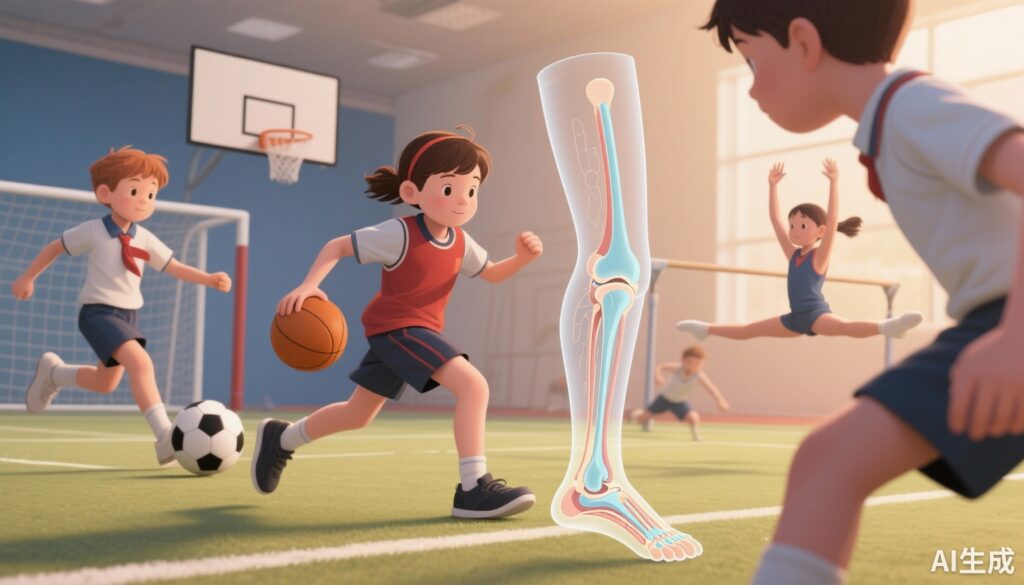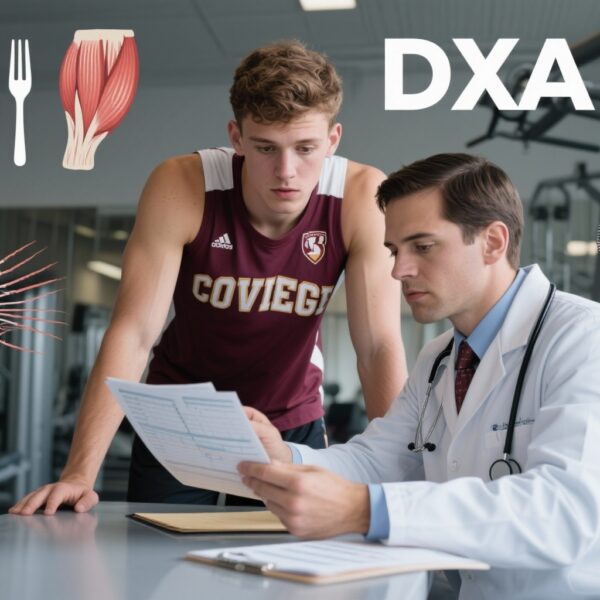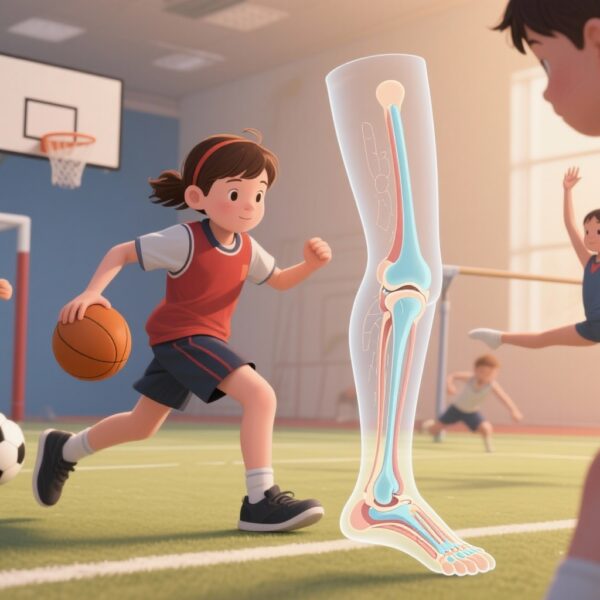Highlight
– Lower-extremity apophysitis (chiefly Sever’s, Sinding-Larsen-Johansson, Osgood–Schlatter) is common in primary-school children and adolescents and may cause weeks to months of pain.
– In a 5.5-year prospective Danish cohort using weekly parental SMS surveillance, 1265 apophysitis episodes were recorded in 1670 children; median symptom duration was 3–4 weeks (range 1–45 weeks).
– Incidence was 3.2–7.0 cases per 1000 leisure-time sport (LT-sport) participations; participation in soccer, handball, basketball and jump gymnastics approximately doubled to tripled risk (RR 2.07–2.74), while extra PE lessons did not increase risk.
– Early diagnosis and targeted activity modification may shorten symptom duration and preserve ongoing physical activity, but intervention trials are needed to confirm causality and optimal management strategies.
Background and disease burden
Apophysitis denotes inflammation or symptomatic overload of a secondary ossification center (apophysis) at tendon attachment sites. In growing children and adolescents, the cartilaginous apophysis is mechanically vulnerable to repetitive traction forces generated during rapid growth and high-impact or jumping activities. The three most common lower-extremity (LE) apophyseal disorders are Osgood–Schlatter disease (tibial tubercle), Sever’s disease (calcaneal apophysitis), and Sinding-Larsen–Johansson syndrome (inferior patellar pole).
Although typically regarded as self-limited, LE apophysitis causes pain that can limit participation in sports, physical education, and everyday activities. Given the role of childhood physical activity in long-term health, conditions that reduce activity during key developmental periods—if common—may have broader public-health implications.
Study design
The study by Wedderkopp and colleagues examined incidence and sport-related risk factors for LE apophysitis in a prospective cohort of Danish primary-school children followed for 5.5 years. Parents provided weekly reports by text message on injury occurrences and leisure-time sport (LT-sport) participation; reported injuries prompted clinical assessment to confirm diagnosis. The cohort comprised 878 girls and 792 boys (total 1670 children), from whom 1265 apophysitis episodes were identified. The trial was registered (Danish Data Protection Agency J. no. 2008-41-2240; ClinicalTrials.gov NCT03510494).
Key findings
Incidence and distribution. Across the study period, 1265 episodes of LE apophysitis were recorded in 1670 children, with >99% of cases representing Sever’s, Sinding-Larsen–Johansson, or Osgood–Schlatter presentations. Incidence was expressed relative to LT-sport participations and ranged between 3.2 and 7.0 cases per 1000 LT-sport participations. The use of LT-sport participations as the denominator reflects exposure to organized or leisure sports rather than person-time alone.
Symptom duration. Median episode duration was 3–4 weeks (interquartile range not specified in the reported summary), with an observed range of 1 to 45 weeks. This highlights the potential for both brief and prolonged symptomatic periods, with a minority experiencing many weeks to months of pain and functional limitation.
Risk factors: sport-specific effects versus PE. The study found no increase in apophysitis risk associated with extra physical education (PE) classes. In contrast, participation in certain leisure sports—soccer, handball, basketball, and jump gymnastics—was associated with an elevated risk, with reported risk ratios (RR) in the range of 2.07–2.74. These effect sizes indicate approximately a doubling to nearly tripling of relative risk for children participating in these sports compared with those not participating.
Interpretation of the RR and incidence metrics. An RR of ~2–2.7 indicates a meaningful association but does not in itself prove causality. The incidence rate per 1000 LT-sport participations provides a pragmatic exposure-based risk metric that clinicians and public-health planners can use when counseling families or designing prevention programs.
Expert commentary and appraisal
Strengths
The study’s strengths include its prospective design, active weekly surveillance using parental SMS (reducing recall bias), and systematic clinical follow-up of reported injuries to confirm diagnosis. The large cohort size and multi-year follow-up allow analysis of incidence across ages at greatest vulnerability (peri-pubertal growth periods).
Limitations
Several limitations merit consideration. First, exposure and outcome measurement relied on parental report and clinical assessment without centralized imaging or standardized diagnostic adjudication described in the summary; potential diagnostic heterogeneity and inter-rater variability could influence case capture. Second, the exposure denominator—LT-sport participations—may combine heterogeneous participation intensities and durations (e.g., casual play vs. elite training), limiting precise dose–response assessment. Third, confounding by unmeasured variables (such as baseline activity level, BMI, growth spurts, technique, footwear, or playing surface) could influence both sport participation and injury risk. Fourth, the cohort represents Danish primary-school children and may not be fully generalizable to populations with different sport participation patterns, access to sports medicine care, or growth/timing patterns.
Biological plausibility and mechanism
Findings are biologically plausible: sports characterized by frequent running, cutting, jumping and high eccentric quadriceps or Achilles loading (soccer, basketball, handball, jump gymnastics) generate repetitive traction at apophyseal insertion sites during a period of relative physeal weakness. Physical education classes may involve lower-intensity, heterogeneous activities with less repetitive loading, which could explain the lack of association between extra PE and apophysitis risk.
Clinical implications and practical recommendations
For clinicians, coaches and parents, the study highlights several actionable points:
- Maintain a high index of suspicion for apophysitis in children presenting with localized knee or heel pain, particularly those engaged in high-risk leisure sports (soccer, basketball, handball, jump gymnastics).
- Early clinical diagnosis and tailored activity modification (temporary reduction or modification of high-impact training, cross-training with lower-impact activities) may reduce symptom duration and preserve longer-term participation in physical activity; however, evidence from randomized trials is lacking.
- Conservative measures (relative rest, activity modification, targeted eccentric and strengthening exercises, load management, analgesia as needed, shoe/orthotic assessment) remain mainstays of care. Engage physiotherapy when pain limits function or when return-to-sport guidance is needed.
- Consider educational programs for coaches and school PE teachers to recognize early symptoms, encourage appropriate activity modification, and prevent excessive repetitive loading during rapid growth phases.
- Monitor high-risk athletes for growth-related pain and advise staged return-to-play once pain is controlled and function restored.
Research gaps and future directions
This study identifies several areas for further research. First, randomized or quasi-experimental trials are needed to test whether specific interventions (early diagnosis programs, coach education, structured load-management protocols, physiotherapy regimens) reduce symptom duration or prevent recurrences. Second, more granular exposure assessment (training hours, intensity, accelerometry) could clarify dose–response relationships and thresholds for safe sport participation. Third, studies should investigate modifiable biomechanical and fitness factors (strength, landing mechanics, flexibility) that mediate risk and could be targeted in prevention programs. Finally, long-term follow-up would determine whether childhood apophysitis predisposes to later tendinopathy or other musculoskeletal sequelae.
Conclusion
In a large prospective cohort of primary-school children, lower-extremity apophysitis was common and often linked to participation in specific leisure sports (soccer, handball, basketball and jump gymnastics) rather than additional school-based PE. Median symptom duration was several weeks, with a minority experiencing prolonged symptoms up to 45 weeks. Clinical vigilance, early diagnosis, and pragmatic activity modification tailored to the child’s symptoms and sport exposure appear reasonable to limit the burden of pain and maintain participation in physical activity. Definitive evidence that early interventions reduce episode duration or long-term impact awaits interventional trials.
Funding and trial registration
Trial registration: Danish Data Protection Agency (J. no. 2008-41-2240) and ClinicalTrials.gov (NCT03510494). Funding sources were not described in the summary provided.
References
1. Wedderkopp N, Wang C, Steele R, Hebert J, Rexen C, Jespersen E, Junge T, Thomsen T, Jensen FM, Shrier I. Incidence of and Risk Factors for Lower Extremity Apophysitis in Children and Adolescents. Sports Med. 2025 Nov 3. doi: 10.1007/s40279-025-02328-w. Epub ahead of print. PMID: 41182572.
Thumbnail image prompt
Realistic medical–illustration thumbnail: a group of school-aged children actively playing sports—soccer, basketball, gymnastic jumping—on one side, with a semi-transparent anatomical overlay on the other showing knee and heel growth plates (tibial tubercle and calcaneal apophysis); warm clinical colors, clear labels for Osgood–Schlatter, Sever’s disease, and Sinding-Larsen–Johansson; high-resolution, balanced composition suitable for a journal feature.



